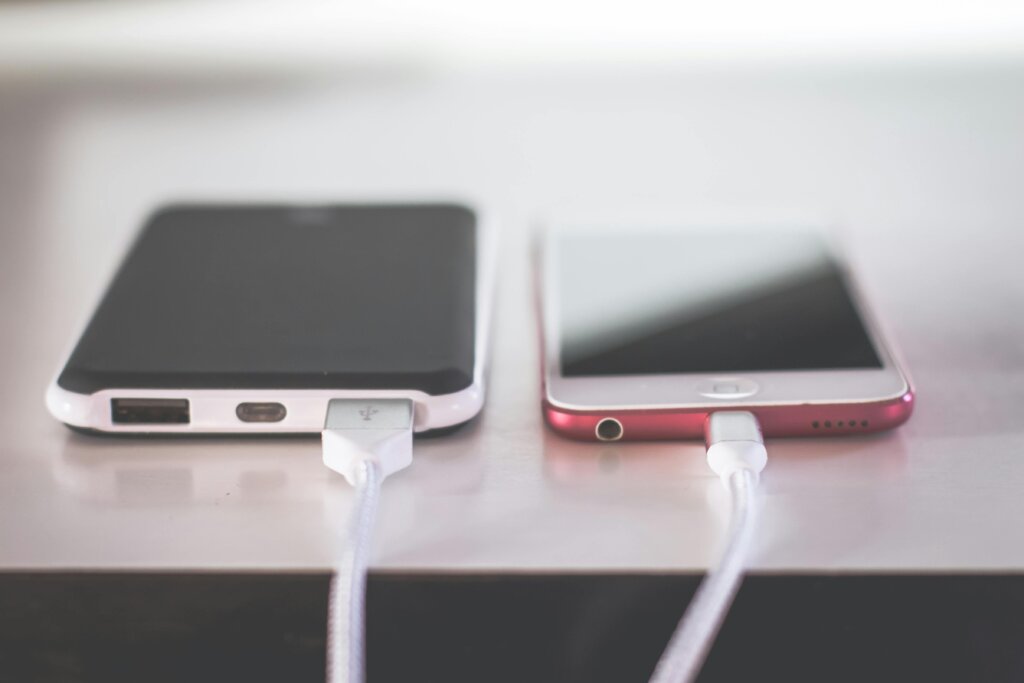They’re everywhere. In your phone, laptop, electric scooter, or even your drill: lithium-ion batteries (or “li-ion” as enthusiasts call them) have invaded our daily lives. Light, compact, and packed with energy density, they deliver unbeatable battery life to all portable devices. But this performance comes at a cost: if misused, they can pose serious dangers. And not minor ones.
Short-circuit, overheating, battery fires, or toxic gases: just one defect or handling error can turn this genius device into a very real fire hazard.
To sum up:
- Lithium-ion batteries are high-performing but sensitive: a shock, overheating, or short-circuit and the fire risk becomes real.
- Inside, it’s pure chemistry: anode, cathode, flammable electrolyte… a delicate balance not to be upset.
- To limit risks: use the original charger, keep an eye on charging, and store batteries in a dry, temperate, clear space.
- Avoid bad habits (charging on a couch, full discharging, home tinkering…): these multiply risks with no warning.
- If there’s an alert or damaged battery, keep your distance, ventilate, call emergency services, and always recycle at a specialized collection point.
What’s really happening inside a li-ion battery
A lithium-ion battery isn’t just an energy tank. It’s a tiny, complex chemistry system with an anode, a cathode, and a flammable electrolyte as conductor. If the thermal balance is upset – due to shock, manufacturing defect, short-circuit, or damage – it can go into thermal runaway.
And then everything can accelerate: toxic gases released, pressure builds, fires start, even explosions can happen.
Electric vehicles, e-bikes, scooters, or e-cigarettes aren’t the only ones concerned. Even smartphones, small batteries, or tools like drills can be at risk.
5 best practices for stress-free battery use
1. Prioritize reliability, not doubt
Always opt for a manufacturer-approved or certified charger. Counterfeits or generic models are shortcuts to fire risk.
2. Charge smart
Plug the charger into the wall first, then the battery. Never put the device on a bed, couch, or carpet to charge. Prefer a non-flammable surface like tile or metal.
3. Keep an eye on charging
Never charge unattended—not at night or while you’re out. Stay close by and unplug as soon as charging is complete.
4. Monitor the state of your battery
Is the casing swollen, heating up abnormally, or does it smell weird? Stop. Don’t recharge it—set it aside and bring it to a collection point.
5. Store with foresight
Batteries like room temperature. Avoid humidity, extreme heat, or severe cold. Keep them away from flammable materials. If possible, store in a room with a smoke detector.
Absolutely avoid: actions that can set off sparks

Some seemingly harmless habits can seriously increase fire risk. Ban these without hesitation:
- Charging on a bed, carpet, or sofa: flammable surfaces are a no-go.
- Leaving the battery plugged in indefinitely: once charged, unplug it.
- Waiting for total discharge before recharging: below 20%, the battery suffers needlessly.
- Using an unsuitable charger: no mix and match, every battery has its own.
- Trying DIY repairs: opening up a battery without training is an unnecessary risk.
What about insurance—are you covered?
Good news: if a battery fire breaks out at your place, your Lemonade home insurance can help.
Fires caused by lithium-ion batteries are generally covered, except in special cases. Watch out for the usual exclusions though:
- If the incident results from clear negligence (like leaving a damaged battery charging or going out without locking up), your claim might be denied.
- The same goes for a lack of obvious maintenance (no smoke detector, dangerous storage, battery left on a cushion…).
If there’s a warning sign: how to react to a battery fire?
Crackling, a chemical smell, smoke? Stay calm, but don’t improvise.
- Move away from the battery immediately, if possible without moving it.
- Air out the room and avoid staying inside.
- Cut off the electricity supply if it’s safe.
- Call the fire department without delay.
- Do not use water: some batteries react badly to water. Only use suitable extinguishers (CO₂ or powder D types).
- If the incident happens outside, move combustibles away if you can do so safely. Don’t try to extinguish an active fire alone.
What next? Always recycle
Recycling batteries is not optional. These small objects contain substances that are hazardous to health and the environment.
- Used batteries must be taken to a collection point: store, waste facility, or drop-off box.
- Damaged batteries (swollen, punctured, leaking…) should be put in a fireproof container before being handed over to a professional.
- Never throw a lithium battery in regular trash: even a minor bump in a collection truck can start a fire.
Key takeaway
Battery technologies have transformed our daily lives. But with this freedom comes responsibility: follow instructions, stay vigilant during charging and storage, and adopt good practices. Make the most of your devices—safely. 💪




